 Icy roads, high heating bills, frozen pipes, shoveling snow. These are all concerns we deal with during a Long Island winter. But ticks? Do we need to worry about ticks in the heart of winter? The answer may come as an unpleasant surprise for you.
Icy roads, high heating bills, frozen pipes, shoveling snow. These are all concerns we deal with during a Long Island winter. But ticks? Do we need to worry about ticks in the heart of winter? The answer may come as an unpleasant surprise for you.
[Continue Reading]
What Is Rocky Mountain Spotted Fever?
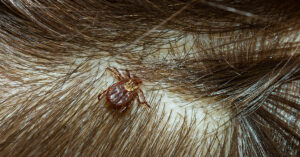 For Long Island residents, ticks are a part of life. Often found in wooded areas and tall grass, ticks present more than just a nuisance to you and your family, but potentially life-threatening illnesses. There are several tick-borne illnesses, the most common one being Lyme disease.
For Long Island residents, ticks are a part of life. Often found in wooded areas and tall grass, ticks present more than just a nuisance to you and your family, but potentially life-threatening illnesses. There are several tick-borne illnesses, the most common one being Lyme disease.
Lyme disease causes fever, headache, and fatigue. If it goes untreated for too long, Lyme disease can cause infection to spread into the joints, nervous system, or even the heart. Approximately 35,000 people in the United States contract Lyme disease annually, averaging nearly 100 cases daily. And that’s only one of the tick-borne illnesses. Another potentially deadly tick-borne illness of note is Rocky Mountain Spotted Fever.
[Continue Reading]
What Insects Have Been Genetically Modified?
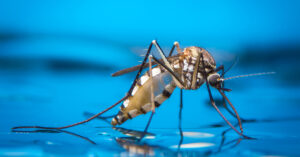 As insects increasingly become resistant to pesticides, scientists seek innovative ways to decrease their numbers. Genetic pest management is one of the techniques being explored in the U.S. and around the globe. From mosquitoes that transmit dangerous viruses to moths and flies that destroy crops, scientists are altering insects’ genes to prevent them from reproducing and causing harm.
As insects increasingly become resistant to pesticides, scientists seek innovative ways to decrease their numbers. Genetic pest management is one of the techniques being explored in the U.S. and around the globe. From mosquitoes that transmit dangerous viruses to moths and flies that destroy crops, scientists are altering insects’ genes to prevent them from reproducing and causing harm.
[Continue Reading]
Now Is the Time To Get Winter Tick Shield Protection
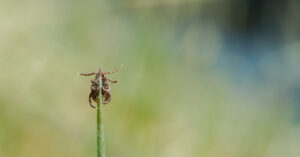 When temperatures dip, you may think pest-related threats have ended for the winter. This is true for some pests but not so for ticks. April through October is considered tick season in the northeast United States, but these disease-carrying pests can thrive well into autumn and winter. Ticks are active when temperatures are above 40 degrees Fahrenheit, emerging from mulch beds and from under wood piles. Our Tick Shield granular treatment will kill new ticks as they hatch, providing year-round protection.
When temperatures dip, you may think pest-related threats have ended for the winter. This is true for some pests but not so for ticks. April through October is considered tick season in the northeast United States, but these disease-carrying pests can thrive well into autumn and winter. Ticks are active when temperatures are above 40 degrees Fahrenheit, emerging from mulch beds and from under wood piles. Our Tick Shield granular treatment will kill new ticks as they hatch, providing year-round protection.
[Continue Reading]
3 Facts To Know About Mosquito-Borne Dengue Fever
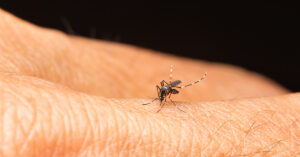 Mosquitoes are an unavoidable part of life for most New Yorkers, and there are approximately 70 different species of mosquitoes in our state alone. And while mosquitoes can potentially be active any time of year in New York under the right circumstances, they are most active between April and October.
Mosquitoes are an unavoidable part of life for most New Yorkers, and there are approximately 70 different species of mosquitoes in our state alone. And while mosquitoes can potentially be active any time of year in New York under the right circumstances, they are most active between April and October.
[Continue Reading]
5 Tips for Avoiding Ticks in the Fall
 Autumn is prime time to prepare your yard for the winter ahead – to rake up fallen leaves, mulch, plant bulbs, and clear away garden clutter. It’s also an excellent season for spending time in nature: walking through woods ablaze in fall color or sitting around a cozy fire pit. One might think that fall is an idyllic, bug-free season with its cooler temperatures, but don’t let down your guard. There are still ticks out there, waiting for the perfect host to latch on to; don’t let it be you, your family, or your pets.
Autumn is prime time to prepare your yard for the winter ahead – to rake up fallen leaves, mulch, plant bulbs, and clear away garden clutter. It’s also an excellent season for spending time in nature: walking through woods ablaze in fall color or sitting around a cozy fire pit. One might think that fall is an idyllic, bug-free season with its cooler temperatures, but don’t let down your guard. There are still ticks out there, waiting for the perfect host to latch on to; don’t let it be you, your family, or your pets.
[Continue Reading]
Why You May Still Need To Spray For Mosquitoes In October
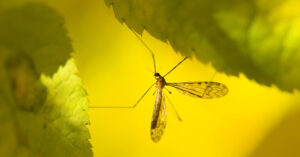 The days are short, the nights are cool, and the leaves are starting to turn. It’s another lovely Long Island autumn day! So why are there still mosquitoes in your yard? You’d think they’d be gone by now, but they aren’t.
The days are short, the nights are cool, and the leaves are starting to turn. It’s another lovely Long Island autumn day! So why are there still mosquitoes in your yard? You’d think they’d be gone by now, but they aren’t.
[Continue Reading]
Are Ticks Attracted To Certain Scents?
 Why do some people never seem to get bitten by ticks, while others are absolute tick-magnets? Are there certain human traits that attract or repel ticks? Yes, there are! By understanding how ticks detect their prey, we can understand why some individuals are more likely than others to attract ticks.
Why do some people never seem to get bitten by ticks, while others are absolute tick-magnets? Are there certain human traits that attract or repel ticks? Yes, there are! By understanding how ticks detect their prey, we can understand why some individuals are more likely than others to attract ticks.
[Continue Reading]
Exploring the Anatomy of Mosquitoes
 In “The Art of War,” Sun Tzu wrote, “If you know the enemy… you need not fear the result of a thousand battles.” The general probably wasn’t thinking of mosquitoes when he wrote his influential treatise on military strategy. However, the wisdom still applies: By understanding how mosquitoes function, we are better equipped to fight them.
In “The Art of War,” Sun Tzu wrote, “If you know the enemy… you need not fear the result of a thousand battles.” The general probably wasn’t thinking of mosquitoes when he wrote his influential treatise on military strategy. However, the wisdom still applies: By understanding how mosquitoes function, we are better equipped to fight them.
What Is The Anatomy Of A Mosquito?
A mosquito’s body has three parts – the head, the thorax, and the abdomen. Each segment contains organs that make the species efficient, effective hunters. Some of these organs are found only in female mosquitoes because they carry the burden of laying eggs and hunting.
The Head
Do mosquitoes have brains? Yes, they do! The mosquito’s head contains its sensory organs, including the brain and eyes. It’s also home to the proboscis, the mosquito’s “Swiss army knife” multi-function mouthpart.
Although a mosquito’s brain lacks complexity and is proportionally very small, it’s more than adequate to fulfill its functions: sight, movement, taste, and detecting scent and temperature.
One of the more fascinating processes in the female mosquito’s brain is how it integrates olfactory and visual cues to create a behavioral response. When a female mosquito picks up certain scents, her brain triggers the visual system to seek out shapes that are likely to be potential prey. After identifying a likely blood meal, her brain directs her to track and hone in on it.
Mosquitoes have two compound eyes with photosensitive cells that detect variations in light. Their eyes are covered with “ommatidia,” tiny lenses that function as dozens of individual eyes-within-an-eye.
Arguably the most exciting and complex part of a mosquito is the proboscis, the long, needle-like “straw” through which a female extracts blood while biting a person. The proboscis comprises six individual needles, each of which has a function, whether it is to cut into the prey’s skin or hold tissues apart. At the same time, the mosquito feeds to locate blood vessels underneath the skin, inject saliva and blood-flow enhancing chemicals, or siphon the blood. Unfortunately, it is also the part of the mosquito through which diseases like malaria, Zika virus, West Nile virus, and others are transmitted.
The Thorax
A mosquito’s thorax is where its legs and wings are located. Mosquitoes have six legs, each with tiny claws used for gripping surfaces. Mosquitoes’ wings are large, considering the size of their body. They fly to hunt for food and mates, but strangely, despite the power in their wings, they rarely travel more than a few hundred feet from where they were hatched.
The Abdomen
The mosquito’s long, narrow abdomen is where it takes in air and digests fluids. This section has small openings on either side called “spiracles,” which allow the mosquito to draw in air. It is also where the female mosquito holds blood drawn from her prey. The abdomen usually contains a small amount of water, which is squeezed out as blood comes in. If you watch a mosquito as she feeds, her belly will go from nearly clear to red as it fills with her prey’s blood. The abdomen is also home to a mosquito’s reproductive system.
How Many Hearts Does A Mosquito Have?
Contrary to widespread misinformation, a mosquito has a single heart, but it doesn’t function like a human heart. Like other insects, mosquito hearts have two sections – an abdominal heart and a thoracic aorta. The heart pumps a substance called hemolymph, a compound that functions like our blood. A mosquito’s organs rest in this liquid, and the heart pumps it around the mosquito’s body. The mosquito’s heart reverses direction periodically, sometimes pumping hemolymph toward the front of its body and sometimes toward the rear.
Do Mosquitoes Sleep?
Sometimes it feels like these aggravating predators never sleep, a partly true impression. Mosquitoes don’t sleep in the way that humans understand the process. Instead, they become “inactive,” resting during their off-peak hours when they’re not actively seeking a host on which to feed.
East End Tick Control® Can Eliminate Your Mosquito Problem
You don’t have to fight alone if you are combating mosquitoes at your Long Island home. We can eliminate them and ensure that they do not return. We are proud to note that all our options are family and pet safe. For those living near Southampton, please call (631) 287-9700. If you are closer to East Hampton, please call (631) 324-9700. If you reside near Southold, please call (631) 765-9700. You can always email us as well.
How Are Ticks Related to Spiders?
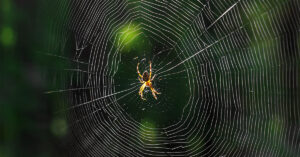 When it comes to bugs, not all creepy-crawly critters are created equally. Some bugs are insects, and some are not. Insects are small, six-legged animals, often with wings. Ticks may be small, and some may have six legs when they’re young, but ticks aren’t insects. They’re arachnids and share more characteristics with spiders than ants, flies, beetles, and other insects.
When it comes to bugs, not all creepy-crawly critters are created equally. Some bugs are insects, and some are not. Insects are small, six-legged animals, often with wings. Ticks may be small, and some may have six legs when they’re young, but ticks aren’t insects. They’re arachnids and share more characteristics with spiders than ants, flies, beetles, and other insects.
Are Ticks Related To Spiders?
Ticks are more closely related to spiders than they are to insects. Like spiders, they are a part of the arachnid family, along with mites and scorpions. Both spiders and adult ticks have eight legs and lack antennae and wings. Can ticks spin webs? Unlike their spider cousins, ticks are opportunistic predators, waiting for their prey to wander close enough to latch onto.
What Is The Difference Between A Tick And A Spider?
Both spiders and ticks are arachnids, but ticks aren’t spiders; rather. Ticks are a mite species, and mites are tiny, primarily parasitic pests that often cause itchy bites that can transmit various diseases.
Spiders and ticks are built differently. Both are arthropods– invertebrates with external skeletons and jointed legs, but spiders have segmented bodies while ticks do not, and Spiders have a separate cephalothorax and abdomen. Ticks have small, flat, unsegmented bodies that enable them to attach easily to a host.
These arachnid cousins have very different diets as well. Most spiders consume insects, but some will eat nectar, pollen, seeds, leaves, web silk, or dead arthropods. Some even eat their exoskeleton after shedding it! Larger spider species may consume small lizards, birds, bats, or fish. Humans, pets, and livestock are only part of the spider diet in monster movies, and they do not seek out humans as dietary staples.
On the other hand, ticks feed on the blood of mammals – people, pets, wild animals – and livestock, as well as on birds, reptiles, and amphibians. They are parasites that latch onto their host with their mouthparts, feasting on a blood meal.
Tick Bites vs. Spider Bites
Unlike ticks, spiders rarely transmit infectious diseases, and their bites are usually harmless. The exceptions are black widow and brown recluse spider bites that transmit toxic venom, causing pain, flu-like symptoms, skin lesions, and neurotoxicity.
Ticks, on the other hand, are a vector of multiple diseases. It’s estimated that more than half the ticks on Long Island carry Lyme disease. This bacterial disease is transmitted to humans through the bite of the black-legged tick, causing flu-like symptoms and a distinctive bullseye rash. East End residents are at risk of tick-borne diseases, including anaplasmosis, babesiosis, ehrlichiosis, tularemia, and Rocky Mountain spotted fever, so closely monitor the results of any tick encounters.
Call East End Tick Control® For Peace Of Mind
East End Tick Control® is Eastern Suffolk County’s most-experienced tick control company, providing the East End with effective tick extermination treatments since 1997. Protect your family from disease-carrying ticks year-round by requesting a free estimate now or by calling our Southampton office at (631) 287-9700, our East Hampton office at (631) 324-9700, or our Southold office at (631) 765-9700.
- « Previous Page
- 1
- …
- 3
- 4
- 5
- 6
- 7
- …
- 11
- Next Page »





